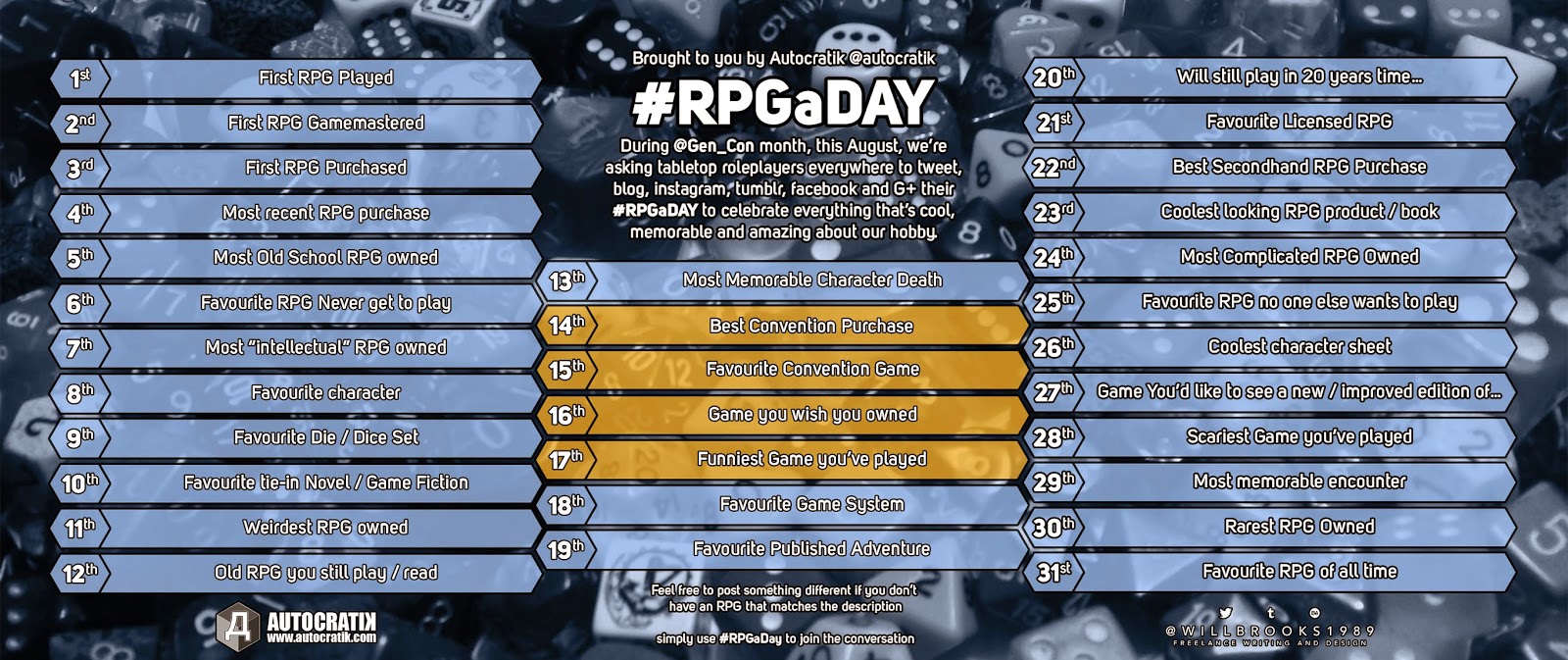This one really hasn’t changed since last year.
Today’s #RPGaDAY topic is most old school RPG owned. This is going to be difficult as I doubt there is an actual definition of what “old school†is. I’m going to say that it’s not the oldest RPG I own, because that would be either Ghostbusters or Twilight: 2000, both of which have some modern elements in them.
Twilight: 2000 aside: While I probably don’t have to go into how Ghostbusters was groundbreaking with dice pools, brownie points, or a crazy successful example of expanding a rather limited IP into something so much more than the original, but Twilight: 2000, a modern game? Surprisingly, yes! (Well, partly.) See, in T:2000, your character could buy contacts – people in the game world that your character knows. But the clever part was you could leave them blank and fill them out in play. You filled them out in play by telling the GM that a specific NPC in the game is someone that you know. Even if the NPC is the Baron of Warsaw, which would completely derail an adventure if GM slavishly stuck to his master plot.
Twilight: 2000 is the earliest game I can recall that allowed for the players to take some narrative control over the story that didn’t involve their character’s actions.
But back to the most old school RPG I own:
It’s got to be a game with a defined GM/player divide – the players are playing in the GM’s story and have no input on the setting or storylines apart from in-game character actions and reactions.
One of the game’s primary focus is combat resolution. Preferably, this is the main focus of the game. Combat resolution is done with an attempt to make the combat as “realistic†as possible, despite the setting. Tables with many, many combat modifiers helps. Characters should also have to keep track of how many arrows/bullets/laser blasts they have fired off.
 Character creation should last an entire game session; some players will have to finish making their characters before the next session, but probably won’t.
Character creation should last an entire game session; some players will have to finish making their characters before the next session, but probably won’t.
Encumbrance rules? Good.
If the game has magic, are there spells that directly target one attribute score, suggesting that magicians in the game world have realized that every living thing in the world is, in fact, a character in a game?
Does the background section of the main rule book (Of course we have supplements and additional sourcebooks!) have a timeline or is at least twenty pages long? ((The best example of going way overboard on the background section is Blue Planet, 2nd Edition. There’s a long in-game fiction section about the setting, an equally-lengthy narrative about the history of the world of Poseidon and recent events back on Earth, plus an incredibly long timeline.))
Is there a meta-plot?
My most old school RPG is Shadowrun, 5th Edition.
